Beyond The Door (1974)
Directed by: Ovidio G. Assonitis, Roberto D'Ettorre Piazzoli
Written by: Aldo Crudo, Alex Rebar, Antonio Troiso, Christopher Cruise, Giorgio Marini, Ovidio G. Assonitis, Robert Barrett
Starring: Gabriele Lavia, Juliet Mills, Nino Segurini, Richard Johnson
AKA CHI SEI? [WHO ARE YOU?], THE DEVIL WITHIN HER
ITALY
AVAILABLE ON BLU-RAY from ARROW VIDEO
RUNNING TIME: 108 mins/98 mins
REVIEWED BY: Dr Lenera, Official HCF Critic
Jessica Barrett runs away from a satanic ceremony and abandons her boyfriend Dimitri. However, Dmitri is trapped in a pact with the Devil, who will let him survive a car accident as long as he ensures that a certain child is born of Jessica. Many years later, Jessica lives in San Francisco with her husband Robert and their two children Ken and Gail. She become pregnant a third time, but after a major vomiting session during Ken’s birthday party she goes to her doctor who notices that the pregnancy is highly advanced. It also begins to affect Jessica’s behaviour. At the same time, she and Robert are being followed by Dimitri….
Throughout the ’70s and the first half of the ’80s, the Italians were kings of the horror movie ripoff, with even a minor success like Patrick getting a sequel/remake, while major hits were sometimes exploited and copied to death. Dawn Of The Dead led to a wave of gruesome zombie flicks, and I’ve seen them all, but I haven’t yet explored the cycle of films inspired by The Exorcist, except for The Night Child and the appalling travesty that was House Of Exorcism, the re-cut of Mario Bava’s beautiful masterpiece Lisa And The Devil. So I was most keen to see Beyond The Door, the most commercially successful of these flicks and indeed a decent hit in the United States, even though I was lukewarm on its director/producer Ovidio G. Assonitis, the man behind Tentacles, The Visitor [which he only produced but which has his fingerprints all over it] and Madhouse, the latter two also released by Arrow Video a while back and all three reviewed by yours truly. But Beyond The Door, at the least, feels like his most fully achieved work out of the ones that I’ve seen, and one that’s not much like William Friedkin’s classic at all even if it does utilise its main situation and copies some scenes as well a showing the influence of Rosemary’s Baby. It’s full of odd digressions, people behaving oddly, things that don’t make sense, all served up in a languid, dreamlike fashion which might still seem like poor film-making in another context but which sort of fits here. This is a film which, for instance, begins with the Devil telling us for two minutes how he’s not depicted much these days and now exists mostly “underground” while the camera pans around loads of candles surrounded by darkness. The fact that some of the plot remains confusing is therefore possibly neither here nor there, seeing as Assonitis is seemingly more interested in things like his characters just wondering about.
A total of seven people, including Assonitis, are credited with the screenplay and one is tempted to wonder if some of them were working independently to others. It was first assistant director Peter Shepherd who brought Juliet Mills onto the project, having previously worked with her on Avanti!, even though Assonitis would have preferred Samantha Eggar for the lead role. Mills was offered a choice of either points in the movie or her salary. Her agent William Morris, said, “no, no, no, just get your money up front, you might never see the money with these Italians”, so she took her salary, something she later regretted when the film went on to become a hit. Though Italian-made, with all the interior shots filmed at the Incir De Paolis Studios in Rome, all exteriors were shot on location in San Francisco. American International Pictures initially expressed interest in distributing it in the States before Film Ventures International acquired for $100,000 and made a fortune after removing ten minutes, details of which can be found near the bottom of this review seeing as Arrow have also included the American cut in their set. Most other countries got the full version entitled The Devil Within Her. Warner Bros. filed a lawsuit, claiming copyright infringement of The Exorcist, which was ultimately settled in the favor of Warners with the studio receiving a cash settlement and a portion of the film’s future American revenue. The makers were lucky; soon after this a ‘blaxsploitation’ Exorcist variant called Abby was actually taken out of cinemas after two weeks due to another Warners lawsuit and it’s rumoured that they destroyed all the original prints, DVD releases being of poor quality. Beyond The Door was never followed by an official sequel, but to cash in on its success Bava’s Shock was re-titled Beyond The Door 2 in the U.S, in 1979, while 1989 saw the equally unrelated Death Train being given the Beyond The Door 3 monicker.
The opening scene seems to show our heroine fleeing a devil worshiping convent after being spooked by the face of a naked woman turning into that of a man [simple but effective effect here], but it’s not very clear and never explained later. I should warn you that Beyond The Door does this a lot; it’s got a lot of chat, but remains vague about quite a bit. The Devil [never seen but he talks a lot] isn’t too happy that his servant Dmitri seemed to let Jessica escape, Jessica being somebody he has big plans for. Satan mentions a child, though he’s obviously in a patient mood because he then waits many years to impregnate Jessica [well, I’m guessing that’s what he does, we’re never told one way or the other]. Dimitri almost dies when his car falls from a cliff, but Satan says he’ll give him a few more days to live so he can find Jessica and ensure that the birth goes ahead, and will give him more years after he does what’s required. The time aspect really is odd here, seeing as the rest of the film occurs at least a decade later. The titles take place alongside the appropriate lyrics of a song entitled ‘Bargain With The Devil’ over a montage linking Jessica going shopping with her music producer husband Robert insulting a group with lines like, “you sound like a jerk off session in the bathroom” . He’s the one who seems a bit of a jerk, though he’s right when he says to Jessica, “hasn’t it ever occurred to you that our kids need to see a shrink?”, seeing as Ken is constantly eating cans of Campbell’s pea soup while Gail not only reads the novel of Love Story but carries multiple copies around with her. This may have been intentionally funny, but surely it wasn’t intended for Gail to sound several years older than she actually is due to the dubbing? And both kids speaking adult-like lines is just ridiculous – but then so is much of Robert’s dialogue.
Jessica is pregnant, and Robert finds her in the bathroom regurgitating pints of blood. “Honey, are you all right?” he rather-too-calmly asks. After visiting her obstetrician and personal friend, Dr. George Staton, who is constantly playing around with sweets, Jessica is informed that she’s in fact three months pregnant, not the mere weeks she believed, after which she finds herself subject to violent mood swings and even kissing her son very unsuitably, then levitating into the air and through the house in a rather convincing, well done moment. One very well structured and scary, not to mention imitated, scene has the kid’s toys come to life including some horrible dolls. Another bit involving a rocking chair and an ‘imaginary friend’ may seem even more familiar. It’s interesting when Robert confronts Jessica who cries “you don’t give me room to breathe”, as if her possession is allowing her to be honest with her husband and even become emancipated. But any such ideas tend to be lost in the often peculiar way in which the story is told. Of course you know that it’s going to wind up with Jessica in a bed being rude [tame profanities though] and her head spinning, though here puke is not just spat out but thrown, and instead of a priest attempting an exorcism we have Dimitri who’s trying to make the birth happen yet has his ‘good’ side resisting this. Scenes like when his two halves are arguing may not compel the way that they should, but you can’t say that Richard Johnson, soon to encounter zombies for Lucio Fulci and once in the running to play 007, doesn’t give his all to the part, even if many of his scenes have him reflected in glass or seemingly stuck in scene transitions, virtually superimposed on images of others, that take ages to happen. He also gets to become all philosophical on the nature of evil in another strange moment set to another montage [this film’s full of montages].
There’s a twist near the end which to me just seems like a get out clause for nothing being logical, then a final scene which really does leave things up for interpretation [though I have my own theory], plus a final shot that may have been copied in a certain 1976 big budget horror movie. But then we also have a scene where we hear loud footsteps and seem to adopt the point of view of some demonic entity approaching Juliet before we see that it’s really her husband, plus an eyeball gag where we cut to the point of view of the eyeball as it falls onto the floor – so I reckon that Assonitis and co. did have their tongues just a bit in their cheeks. Robert and Jessica spend a hell of a lot of time walking around San Francisco, usually while a woman’s voice says stuff like, “there’s no hope” over the funky music tracks like a Greek chorus. Robert gets accosted by some street musicians, one of whom is playing a flute with his nose, while Jessica picks up a rotting banana off the ground and starts to eat it, which is sure sign of demonic possession if you ask me. These scenes are kind of filler but also have an almost surreal, other-worldly effect, and I actually wish now that Assonitis had made some films in which he was the whole auteur, he has a rather off-kilter sensibility that really needed to flourish properly outside of the projects he was assigned to even though he obviously tried to put in as much of his personal style as he could. He reminds me of Nicolas Roeg, like in a scene where Robert discusses Dimitri with another and we hear Jessica, who’s obviously not present, reminiscing about Dmitri seemingly just to the viewer, though I’m not even Roeg would have used as many freezes, something which initially made me think the Blu-ray was faulty. And I’m sure he wouldn’t have shot a scene in which a fire starts and is then never ever referred to again! But if Beyond The Door has done one thing for me, it’s changed my opinion of its producer/director/co-writer a bit.
Juliet Mills does very well throughout, especially good at evoking the agony of possession wearing more subtle makeup than usual. While we get nowhere near the incredible intensity that Friedkin achieved, the scenes where Jessica speaks in both her ‘normal’ voice and in a Mercedes McCambridge-type one are kind of affecting. There’s some great prowling camerawork courtesy of Roberto Piazzoli, sometimes with sound effects that sound like a very drunk person’s snore recorded very loudly on very old recording equipment. Indeed the soundtrack, be it aural effects or Franco Micalizzi’s score which is either highly catchy or just plain odd [sometimes at the same time], is prominent throughout, perhaps too much for some, certainly drawing attention to itself, much like the use of red, from cars to sinks, throughout, cinematographer Roberto D’Ettorre Piazzoli also giving us lot of noirish shots of faces partly bathed in shadow. You could easily cut Beyond The Door, a film which contains a surprising number of things that were re-used in later films, down to 80 minutes without losing any of the plot, things are really dragged out – yet I’m not sure I’d want to lose any of it. I’d imagine that even its fans will admit that it sometimes seems to blur the line between poor film-making and stylised film-making, but it might also make you ponder as to whether the two are that different after all, seeing as the result is a rather interesting, singular experience.
Rating: 









Arrow have really given Beyond The Door the royal treatment. Apparently earlier releases had to be pieced together from different sources, but this doesn’t seem to be the case with Arrow’s gorgeous-looking restoration which really showcases cinematographer Roberto D’Ettorre Piazzoli’s fine work, especially his careful balancing of light and shadow throughout. Grain is present in just the right quantity, colours are vibrant without going too far and detracting from the film’s mood, the image is sharp yet you still can’t not mistake it for a film from the ’70s. Stunning!
The film comes with a bucket load of special features that took me virtually all day to get through. Most of them are new, though all the extras from the Region ‘A’ Code Red release are present across both discs of this release minus an interview with Johnson. The old commentaries this time are housed in the ‘audio options’ section but let’s describe them first anyway as is my norm. Number one has Code Red’s Lee Christian and Nathaniel Thompson with Assonitis, who rarely says anything without being prompted. Fortunately Christian and Thompson never run out of questions to ask him, be it about this film or his others. Assonitis tends to give quick answers and sometimes they’re evasive. Occasionally he seems vaguely arrogant. But it’s interesting to learn, for example, that all the other writers were simply people he tested, some of whose ideas he subsequently used. And that Warners sued for ‘visual’ not ‘written’ copyright and how the situation only properly ended with an agreement five years later. He seems unaware of the strangeness of much of his work, coming across as purely commercially minded, meaning that his avant garde leanings come out unknowingly. An interesting track nonetheless, and it’s followed by a very cheerful-sounding Mills chatting about the film and her career with Scott Spiegel and moderators Darren Gross and Lee Christian. It’s amusing that Speigel reveals who voiced the Devil almost immediately when Assonitis refused to do so, and interesting to learn that Alex Rebar rewrote the script, another thing that Assonitis omits. Mills calls Cannon head Menahan Golan ” a loose cannon” and makes the others laugh even more with a Ryan’s Daughter [which her father John was in] story. I think I slightly preferred this track overall.
Now on to the featurettes. The Devil and I has Assonitis go over much the same ground as in his commentary, though with more detail on things like the lawsuit and getting several composers including Ennio Morricone to submit some music anonymously, and also tells of how he read the novel of The Exorcist and went to buy the rights before being told that Warners had just done so. Barrett’s Hell, named after Piazzoli’s English pseudonym, answers the question of why two names are credited as director despite Assonitis not mentioning this. The two men did direct the film together. Piazzoli also claims that he and others had more input into the script than Assonitis claimed. Hmmm. He also talks of his visual approach, his technique in general, compares people on Italian sets with people on American ones, as well as regretting turning down Cannibal Holocaust. Several times you think he’s finished then he starts up again, but most of what he says is of interest.
Beyond the Music has composer Franco Micalizzi talk of his love for film music at an early age, getting into the business, and creating fresh, innovative soundtracks for the likes of Beyond The Door and My Name Is Trinity – and keep mentioning Youtube. The Devil’s Face interviews camera operator Maurizio Maggi who actually played the Devil at the beginning [I had no idea that it was supposed to be the Devil that we’re seeing], reminisce about the production and how he and others shared jobs, Maggi doing some of the special effects. The audio-only Motel and Devils with Gabriele Lavia has the actor remember San Francisco and say how in Italy stage actors are considered almost a different race from movie actors or indeed most people, though I wish he’d been asked some more questions. Beyond the Door: 35 Years Later is an old, short ‘making of’ from Code Red and when seen after all the other stuff it can’t help but feel a tad pointless because it’s mainly stuff we’ve heard before. However, we learn a third possible way in which the script was written and can chuckle at Assonitis reading from a script. Some alternate credits conclude Disc One.
Disc Two, which is only available on this limited edition [Arrow will probably re-release the first disc], brings you the American theatrical cut, which shortens the early Dimitri/ Devil scene and removes most of the opening credits, the early ‘Bargain With The Devil’ montage that played under them, the Barrett’s shopping, and the street musician scene. This slightly tighter version plays pretty well and a lot of oddness is left in. Code Red also did a limited run of DVDs that added this version to the other, and with it they included deleted footage from the Mills interview not used in the Beyond the Door featurette. Arrow have ported this over, along with Bargain with the Devil, a Lavia interview that was on the Code Red Blu-ray but not the DVD. Assonitis introduces Lavia by reading from a script [again], who then discusses being on the film including Mills keeping her socks on while doing her love scene. However, Arrow have also produced an entirely new feature-length documentary for this disc, Italy Possessed in which critics, filmmakers and stars take us on a journey through Italy’s cash-ins on The Exorcist, each of the major films given some time for reminisces, opinions and [usually] clips including Riccardo Freda’s unmade The Exorcists, some ideas from which ended up in House Of Exorcism. There are some real nuggets here; just wait until you here what Angelo Pannaccio, director of The Return Of The Exorcist who became a pornographer, got up to in the editing suite! Pupi Avati goes on a bit in the concluding section which could have been shortened, but overall this is a fine piece from Arrow and certainly made me want to see all these films even if some of them may not be too good. And thereby endeth the second disc.
Released in a stunning restoration with oodles of extras, Arrow’s Blu-ray release of this eccentric, messy but rather beguiling horror movie would be impressive if it just contained the first disc, but the addition of the second one, notably Italy Possessed, makes it just about essential for the film’s fans and lovers of this kind of movie. Hell, even if you don’t like Beyond The Door, the special features almost make this purchase worthwhile. Bravo Arrow! Highly Recommended.
LIMITED EDITION 2-DISC BLU-RAY CONTENTS
*Limited to 3,000 units
*Brand new 2K restoration of the extended Uncut English Export Version
*Exclusive bonus disc containing the alternate US Theatrical Version and Italy Possessed, a brand-new feature-length documentary on Italian exorcism movies!
*Reversible sleeve featuring original and newly commissioned artwork by Marc Schoenbach
*Reversible fold-out poster
*Perfect-bound collector’s booklet featuring new writing on the film by John Martin and Alessio di Rocco
DISC ONE – UNCUT ENGLISH EXPORT VERSION
*Brand new 2K restoration of the Uncut English Export Version, released as Devil Within Her (108 mins)
*High Definition Blu-rayTM (1080p) presentation
*Original uncompressed mono audio
*Optional English subtitles for the deaf and hard of hearing
*Audio commentary with director/ producer Ovidio G. Assonitis and Euro-horror historian Nathaniel Thompson and moderated by Lee Christian
*Audio commentary with star Juliet Mills and Host producer Scott Spiegel and moderated by film scholar Darren Gross
*The Devil and I – a newly-filmed interview with director/producer Ovidio G. Assonitis [24 mins]
*Barrett’s Hell – a newly-filmed interview with cinematographer Roberto D’Ettorre Piazzoli [32 mins]
*Beyond the Music – a newly-filmed interview with composer Franco Micalizzi [19 mins]
*The Devil’s Face – a newly-filmed interview with camera operator Maurizio Maggi [10 mins]
*Motel and Devils – a newly-conducted audio interview with actor Gabriele Lavia
*Beyond the Door: 35 Years Later – archive featurette [20 mins]
*Alternate Italian Chi Sei? opening titles
*Alternate Behind the Door VHS opening titles
*Alternate Japanese Diabolica opening and ending sequence
*Trailers, TV and Radio Spots
*Image Gallery
DISC TWO – US THEATRICAL VERSION (LIMITED EDITION EXCLUSIVE)
*Brand new 2K restoration of the US Theatrical Version, released as Beyond the Door (99 mins)
*High Definition Blu-ray (1080p) presentation
*Original uncompressed mono audio
*Optional English subtitles for the deaf and hard of hearing
*Italy Possessed – a brand new feature-length documentary on the history of Italian Exorcist rip-offs, including interviews with key filmmakers such as Sergio Martino, Alberto De Martino, Pupi Avati, Marcello Avallone, Ovidio G. Assonitis and many more! [89 mins]
Gabriele Lavia: Bargain with the Devil actor interview [10 mins]
Juliet Mills deleted Interview footage [14 mins]

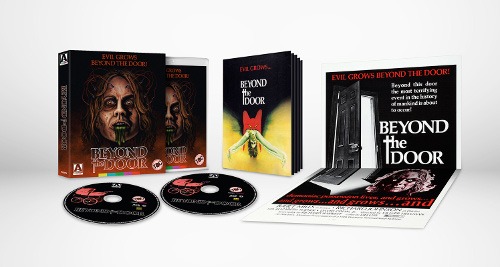
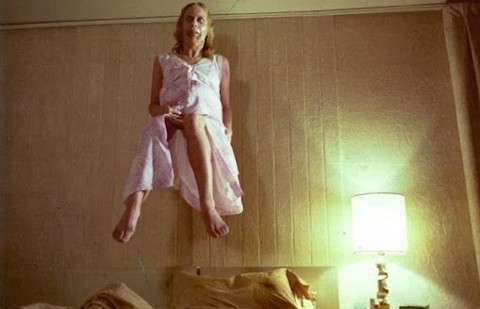
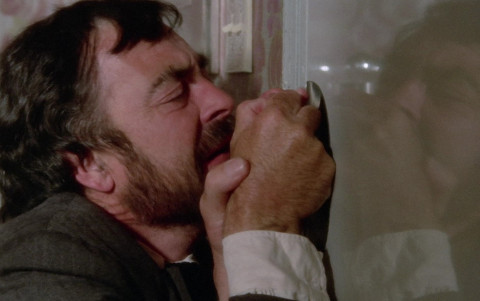

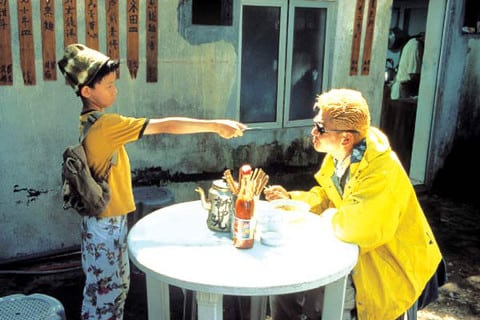
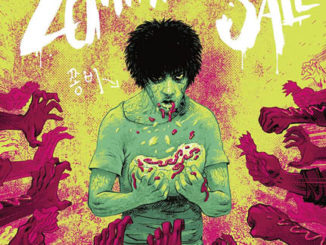
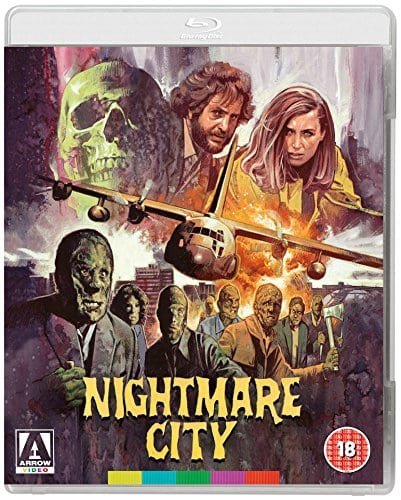
Be the first to comment